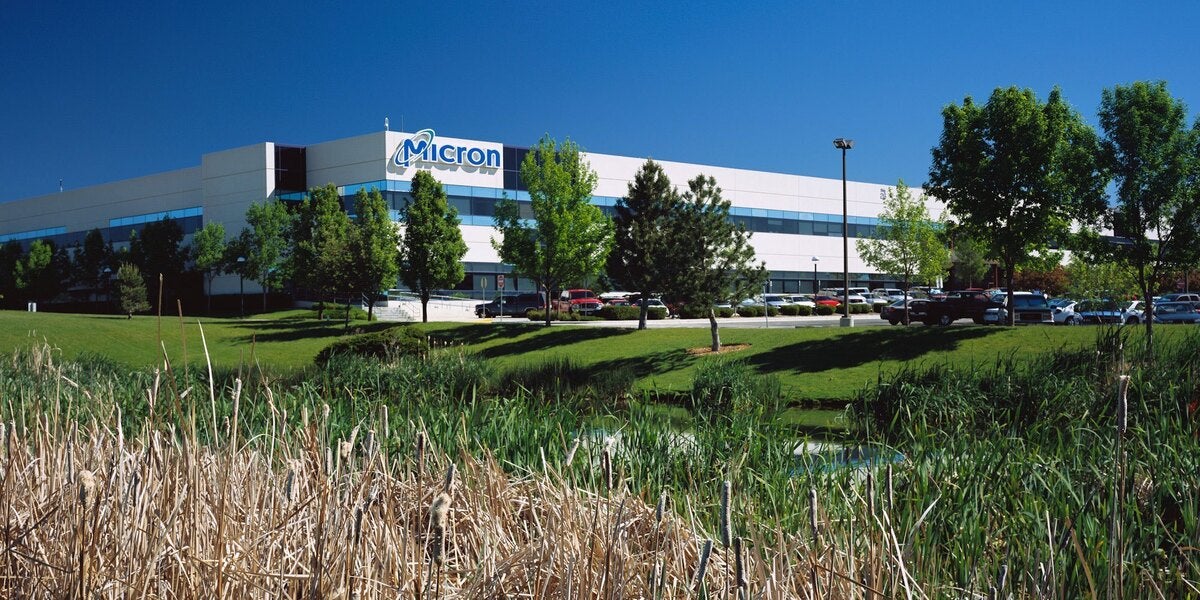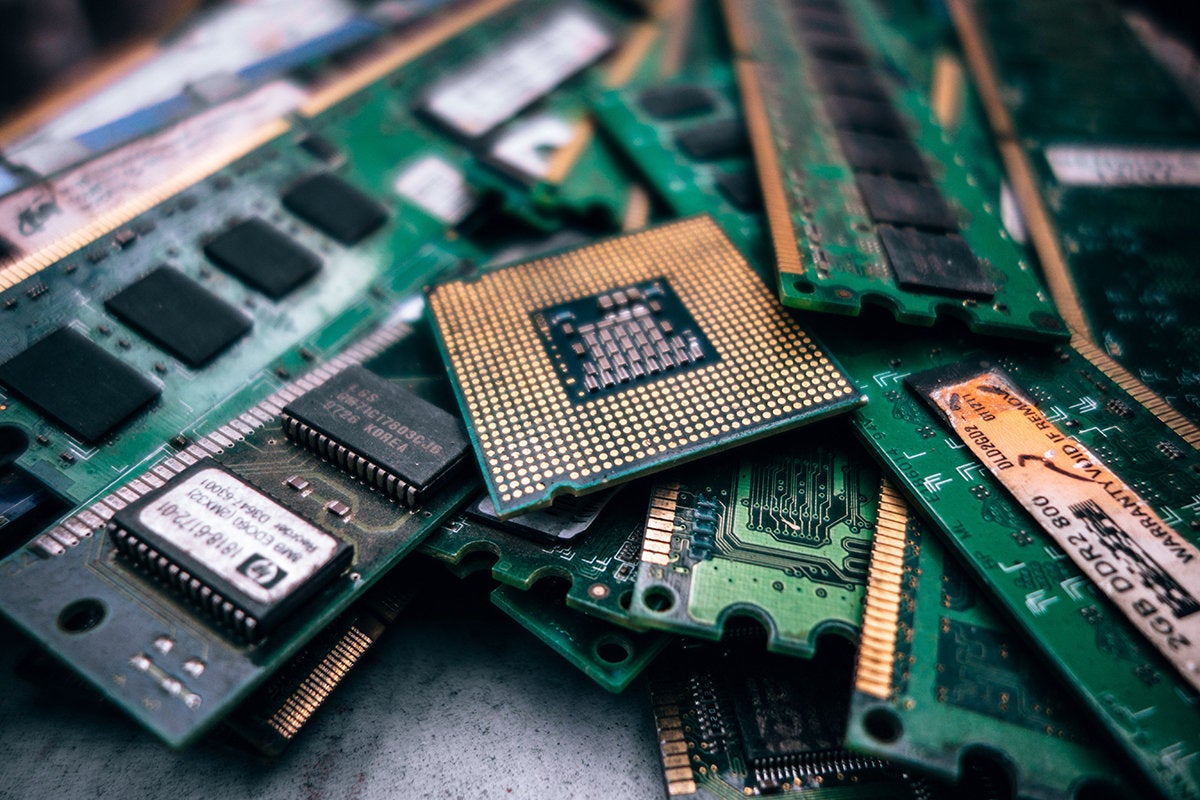- 레드햇, AI 포트폴리오 대규모 업데이트…엔터프라이즈 배포 유연성 확대
- I recommend this cordless stick vacuum over my Dyson - and it's on sale
- I tested a smart cooler and can never go back to toting ice (especially for $100 off)
- This wireless portable speaker delivers amazingly smooth sound with little distortion
- This ultrathin LG laptop is 40% off, and comes with a free 27-inch smart monitor
Micron to build largest chip factory in US history

Chipmaker Micron Technology announced today it will spend $20 billion to build what it called the largest-ever US semi-conductor factory, and may spend up to $100 billion over 20 years to expand it.
The fabrication plant, to be located in Onondaga County, New York, will be the size of 40 US football fields and is expected to provide close to 50,000 jobs for the region, including “9,000 high paying Micron jobs.” Once completed, the manufacturing facility is expected to drastically increase the domestic supply of memory chips.
Micron’s announcement follows other US semiconductor factory projects made recently by other chipmakers, including Intel, Samsung, and TSMC. The new fabs are all part of an effort to restore chip and other technology manufacturing to US shores.
 Fancycrave (CC0)
Fancycrave (CC0)In September, Micron broke ground on a memory manufacturing fab near its headquarters in Boise, ID. That plant was Micron’s first new memory manufacturing facility in the US in 20 years. Micron also recently announced plans to invest approximately $15 billion through the end of the decade in advanced memory manufacturing in Boise, the largest private investment ever made in the state, according to the company. The fabrication plant follows Micron’s earlier announcement to invest $40 billion through the end of the decade to establish leading-edge memory manufacturing in the US.
In a statement, Micron President and CEO Sanjay Mehrotra thanked President Joe Biden and members of Congress for passing the $50 billion CHIPS and Science Act, which was signed into law in August. The Act is aimed at revitalizing the domestic semiconductor manufacturing industry in the US, which has seen its market share slip drastically in recent years due to high operational costs compared to its East Asian competition.
While other factors, including geopolitics and techno-nationalism, are playing a big role in the reshoring of semiconductor manufacturing, the CHIPS ACT is “the final motivation” as funds, subsidies, and tax breaks “provide a level playing field where fabs in the US can be cost competitive with those in Asia,” said Gaurav Gupta, Gartner’s vice president for Emerging Technologies and Trends.
Micron will get $5.5 billion in incentives from the state of New York over the life of the project, alongside anticipated federal grants and tax credits from the CHIPS and Science Act to support hiring and capital investment.
Even as leading semiconductor manufacturers move forward with plans to build new fabrication facilities in the US, creating tens of thousands of new jobs, a lack of available tech talent threatens to stymie efforts.
“The competition for talent is fierce,” Cindi Harper, vice president of Human Resources, Talent Planning and Acquisition at Intel, said in an earlier interview with Computerworld. “It’s also a candidate’s market, meaning the demand for talent is greater than the current supply.”
Gupta noted that finding skilled workers will be a struggle, though there are a number of university programs being sponsored by chipmakers — even in community colleges — to develop a work force.
“Of course, the CHIPS ACT also has some provisions for it — workforce development,” Gupta said. “Now that chip manufacturing is sort of coming back, students and young engineers and technicians will have the motivation to look towards this field.”
Micron and the state of New York said they will spend $500 million in community and workforce development with a focus on disadvantaged populations over the duration of the plant construction.
Even so, chipmakers must compete with hyperscalers and software makers who can pay more, “but, hopefully government subsidies will help,” Gupta said.
“I think this will be a work in progress,” he said. “Fabs will come online between 2024 and 2030 and most of them are highly automated. You do need construction workers initially, but operational and staff requirements aren’t too high.”
Micron said it chose the New York site based on the region’s higher education institutions, access to talent “traditionally underrepresented” in tech jobs and a significant military population that the company said will align with its with commitment to hiring veterans. The region also has available water sources and clean, reliable power for a project of this scale.
Site preparation will start in 2023, construction will begin in 2024 and production output will ramp up in the latter half of the decade, gradually increasing in line with industry demand, Micron said.
“Locating Micron’s industry-leading DRAM production in the US brings tremendous benefits for its customers, enabling them to build their innovative products and solutions using a more resilient, secure and geographically diverse supply chain,” the company said in its statement.
The fabrication plant could eventually include four 600,000-square-foot cleanrooms, for a total of 2.4 million square feet of cleanroom space.
Micron aimsuse 100% renewable electricity at the plant and plans to rely on green infrastructure and “sustainable building attributes” for construction of.
“Greenhouse gas emissions (GHG) for the new facility will be mitigated and controlled by using state-of-the-art technology. These efforts support Micron’s global target to achieve a 42% reduction in GHG emissions from operations by 2030 and net-zero emissions by 2050,” the company said.
Copyright © 2022 IDG Communications, Inc.

